How to Add How-To Schema to Websites
You can not only gain How-to rich results but also an How-to Action for the Google Assistant.
Before we learn how, let’s explain why you should use HowTo schema markup. Google is driven to provide searchers with informational intent to gain the best instructional search engine page results (SERPs). Being involved in Google Search Lab’s beta testing for new Search Generative Experience (SGE) is revealing.
Meaning, Google is giving you double benefits for this SEO schema strategy. The tech company is driven to help searchers identified with informational intent to gain the best instructional steps on search engine page results (SERPs). By implementing How-To Schema markup, you can have your instructional content displayed on the SERP.
Table of Contents
- How to Add How-To Schema to Websites
- Why HowTo Schema Markup Is Important
- Steps to Add HowTo Structured Data Markup to Instructional Pages
- Step 1. Conduct a content audit to identify ideal How-To articles.
- Step 2. Implement all current HowTo schema requirements
- Step 3. Test your markup using Google’s Rich Results Test
- Step 4. Publish and check for errors using Google’s URL Inspection tool
- Step 5. Evaluate HowTo articles’ SERP Performance
- Step 6. Schedule regular schema audits using multiple tools
- Additional HowTo Schema Markup Tips
- SUMMARY: HowTo Schema Markup Provides A Competitive Advantage
Why HowTo Schema Markup Is Important
Examples of HowTo currently displaying in SGE show that Google is suggesting “Steps related to” the main topic. On hover or clicking through, it reveals the most important sub-topics, which triggers another Google search. Google’s guidelines permit HowTo markup on web pages providing plans, procedures, or a sequence of steps for completing a given task.
This highlights how much Google believes searchers continue to depend on searching to learn “how to do” everyday things. The most-searched “How Tos” no longer sound as if they were asked by youngsters. More and more people are asking Google how to so something.
Google’s documentation of this schema type was last updated on 2023-05-23 UTC. It’s important to be knowledgeable about all schema structured data updates for your best chances to gain SERP featured snippets. In August of 2023, it updated and limits HowTo schema markup to desktop-only SERPs.
How to Add How-To Schema to Your Content
There are multiple JavaScript structured markup generators to add schema to your website; we won’t go in-depth here. Besides hand coding, many excellent tools like MarketMuse, SEOClarity, Wordlift, Schema Zoo, and others can help manage this for you. What is evident is that this essential schema type is moving forward in a big way.
We’ll cover the basic steps in this article that apply to all HowTo schema implementation methods.
Steps to Add HowTo Structured Data Markup to Instructional Web Pages
- Conduct a content audit to identify ideal How-To articles.
- Implement all current HowTo schema requirements.
- Validate your markup with Google’s Rich Results Test.
- Publish and check for errors using Google’s URL Inspection tool.
- Evaluate HowTo articles’ SERP performance.
- Schedule regular schema audits using multiple tools.
- Additional HowTo Schema Markup Tips.
Google continues reaffirming the value of HowTo Structured Data in their documentation and search results. So, let’s dive into what steps you need to take to accomplish this.
Step 1. Conduct a content audit to identify ideal How-To articles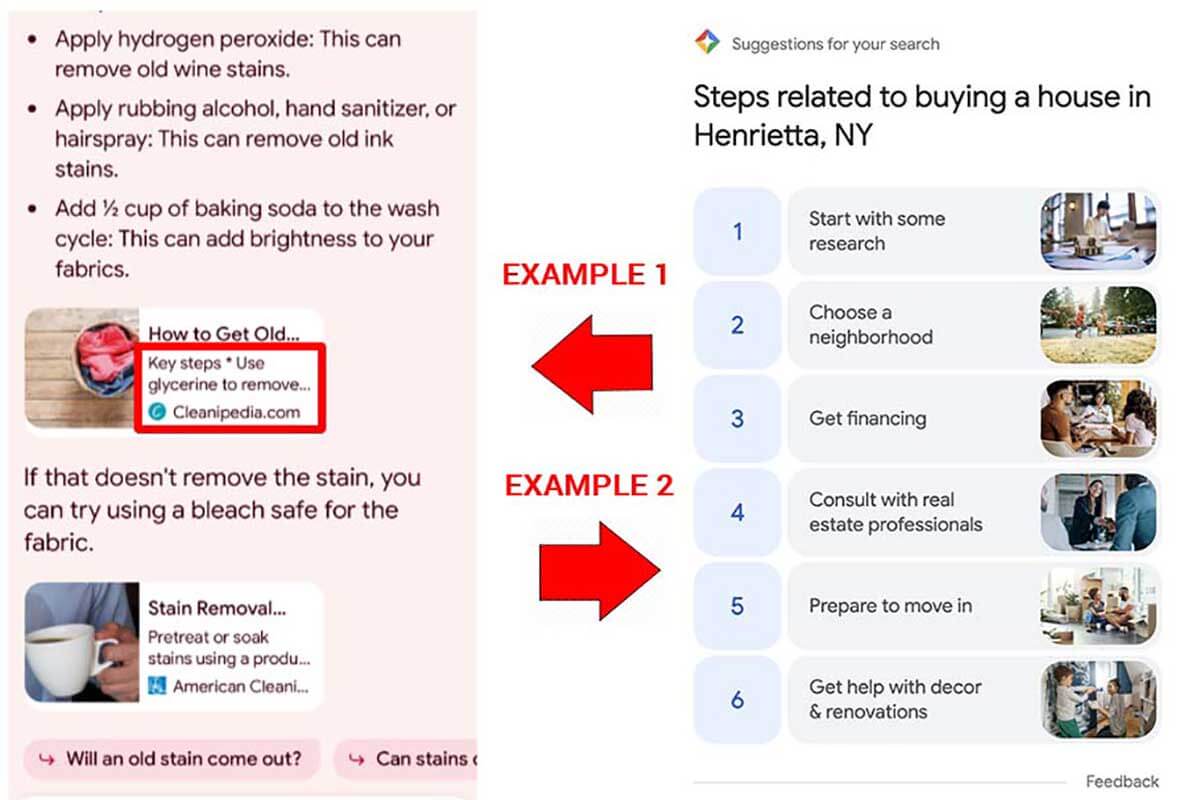
The first step is to research your existing content that qualifies for applying this markup. Identify existing pages that allow you to show people the process of completing a task successfully through a set of steps. Once you have a list, start with the most important web pages that support your business goals and are most helpful to users.
Don’t miss reading and gaining the ability to leverage all of Google’s HowTo schema documentation. For example, don’t make the common mistake of marking up your recipes. For something like, how to make apple pie, use there’s a recipe markup for that specific use case.
As you can see, there are general guidelines to schema markup that need adherance as well as specific guidelines for HowTo schema. You also cannot put “how to” content just anywhere; it needs to be the main focus for that specific page.
HowTo Schema lets you add a structured way for robots and web crawlers to find and use this type of information and present instructional steps on the page. We like to get creative. For example, for eCommerce sites can leverage schema markup on a page dedicated to showing how a product works. This is very effective and helpful content.
Step 2. Implement all current HowTo schema requirements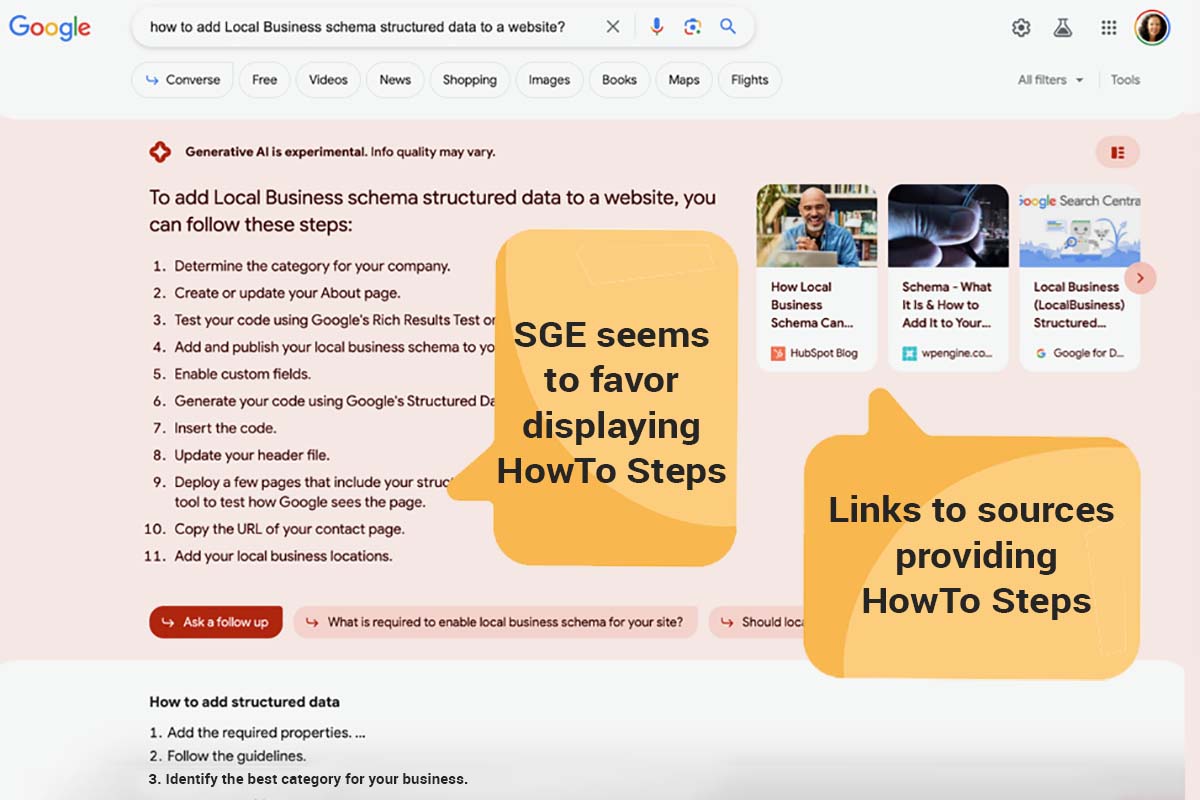
You will understand the reasoning and benefits of the schema code best by learning how to write it yourself. Both schema.org and Google documentation and help forms provide a plethora of resources. The revolution in Google Search is the Search Generative Expereince which is displaying a lot of content showing steps. To win this SERP, make sure your HowTo code is robust and valid.
You can get by with only implementing the standard HowTo result. However, for optimal chances of winning a SERP click, we prefer going for a result with images, or video steps included.
Like other types of markup, the recommended fields change. Some are retired and others pop into existence. That is why we consult this documentation regularly prior to implementation. consider setting up a Google alert to be notified of updates if you are ready to take your markup to an advanced state of Schmea SEO.
“The HowToSection type defines a section of a single how-to and contains one or multiple steps. Don’t use HowToSection to define different solutions to complete a task; instead, use HowToSection as part of a single solution. For listing multiple ways to complete a task, use multiple HowTo objects. For example, multiple ways to change a flat tire are listed as multiple HowTo objects, not HowToSection objects.”
While not all of the following are requirements, they are useful.
Time Related HowTo Schema Properties Include:
performTime: The length of time necessary to complete instructions or a direction (this does not including time to prepare the supplies).
prepTime: The average length of time it takes to prepare items, especially content writing, to be used in instructions or a direction. This will vary by how many steps are included and how much detail is needed.
totalTime: The overall average time dedicated to performing all instructions and related tasks (including time to prepare the supplies).
What you need to know: Multiple ways to incorporate schema into your HTML exists. Examples are: RDFa, Microdata, and JSON-LD. JSON-LD is our preference because it is commonly used, updated, and easy to read.
Step 3. Validate your markup with Google’s Rich Results Test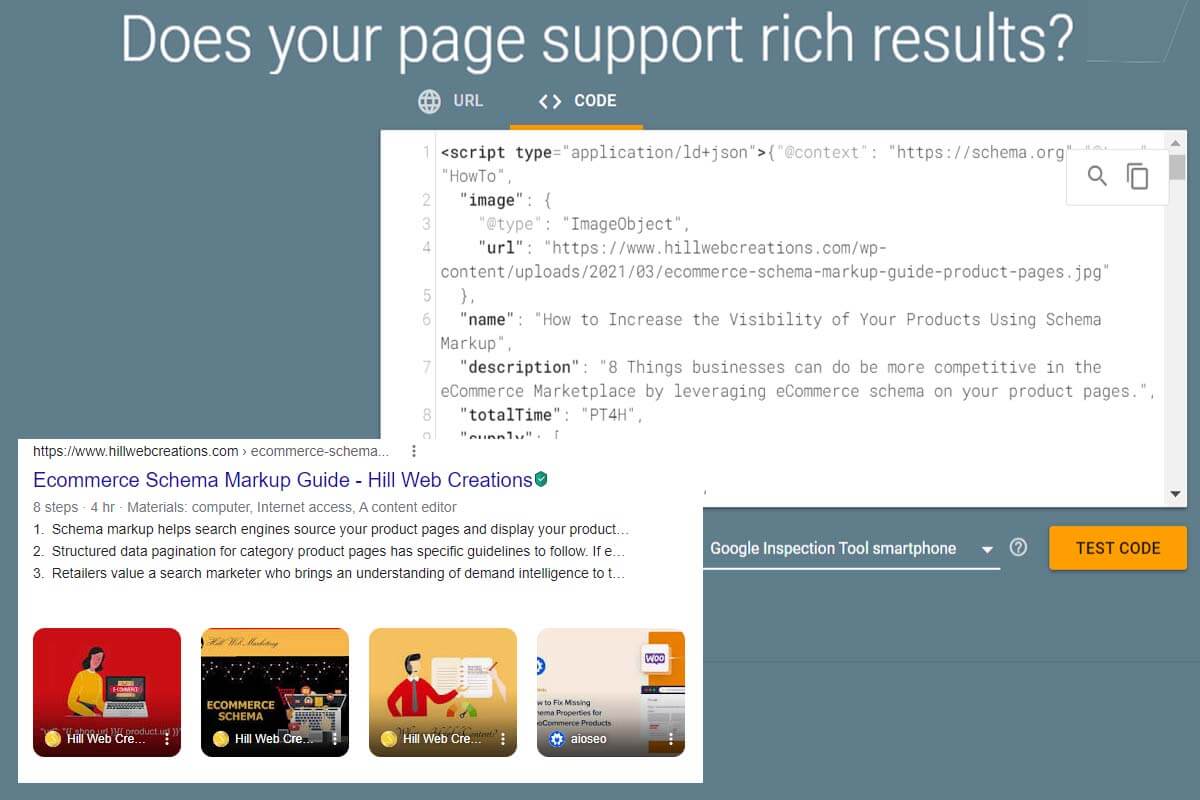
While there are many validation tools, you’ll gain Google’s perspective by using the tech giant’s Rich Results testing tool. This will allow you to see whether all required properties have been used.
This is also a great way to discover all recommended fields that you may have missed. The same as with your FAQ schema markup, use all of Google’s tools that help you test how effective your schema markup is working.
Take the time to find and fix any issues with your code before publishing your HowTo structured data. You don’t have to wait until after publication, although that is affirming, too. Test and validate all schema code as you go and identify any existing issues within your rendered HTML.
Once you have validated your code this way, additionally, check Google Search Console’s “Enhancements” section. This populates a handy list of the pages containing key markup types, like HowTo. While they don’t always win you a rich snippet in search results, this lets you know when. From there, it is easier to replicate success.
Step 4. Publish and check for errors using Google’s URL Inspection tool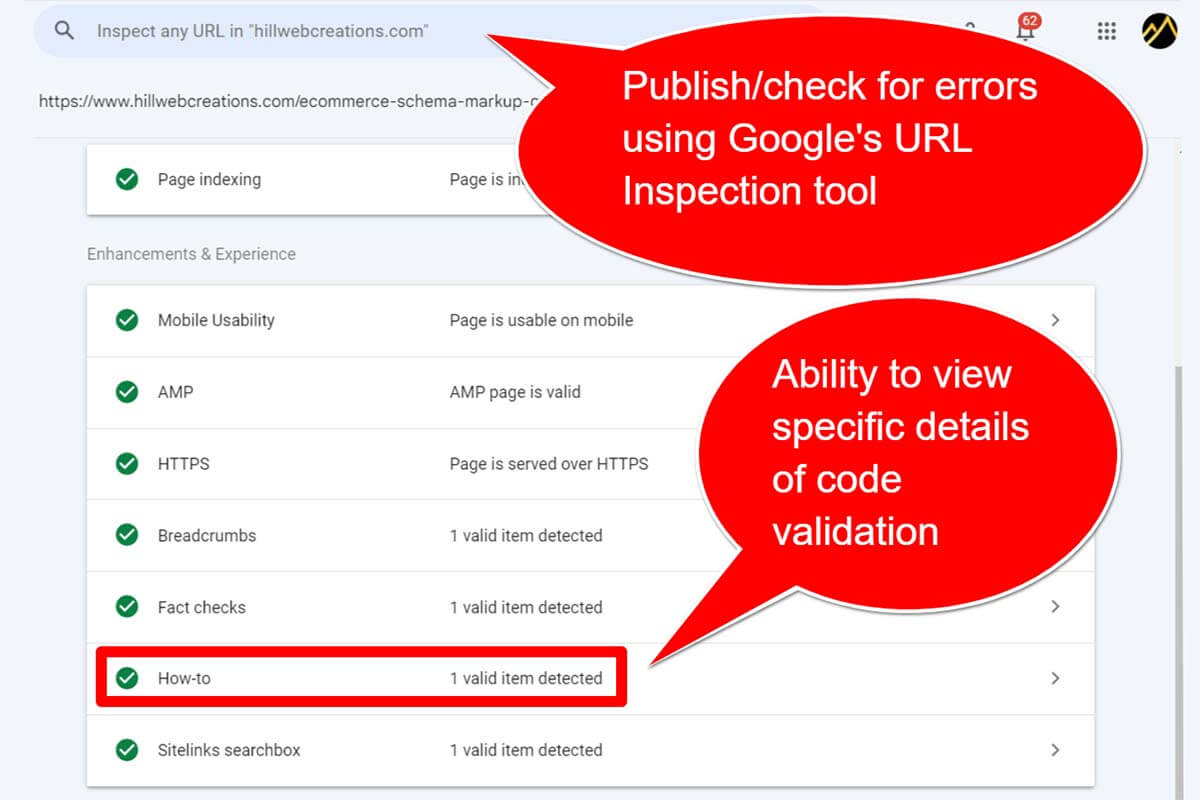
It is better to do your testing in advance. Don’t wait until the Google Search Console sends you a warning or error message. Proactively use Google’s URL Inspection tool; you’ll find it in your verified Google Search Console properties.
This lets you view how your code with present on Google. It’s an ideal time to make any changes that you can see will provide better SERP HowTo content visibility.
What you need to know: Not all schema markup errors are easy to identify. You may have all the technical schema implementation steps in place but are adding the code to the wrong page type. HowTocode only belongs on pages where it fits your instructional content. There are many “general” guidelines to meet for any type of markup.
Step 5. Evaluate HowTo articles’ SERP performance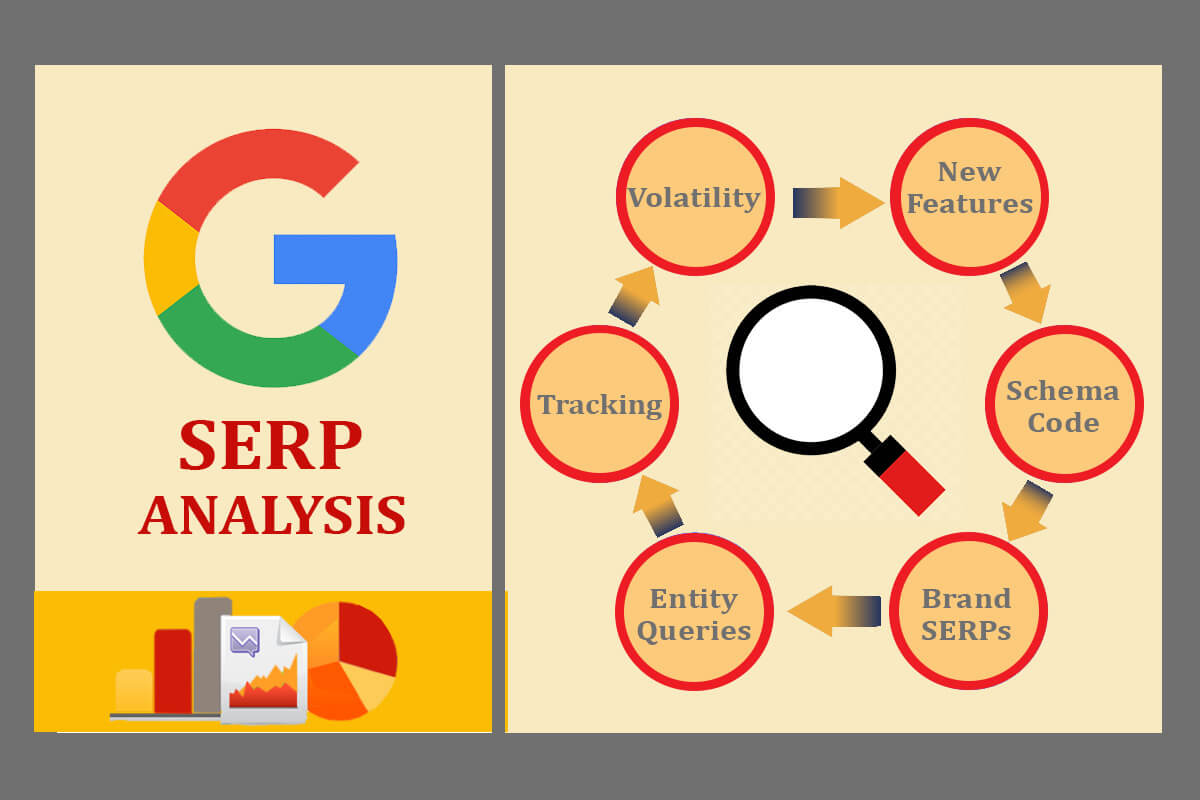
Factual data insights are always better than our hunches. We want to ensure our content performance is improved after implementation, and we can report it to the client. The Google Search Console Performance reports let you view success by type, including HowTo rich results.
HowTo images, like for other featured snippet inclusions, need to be uploaded in the correct image size and format. These highly visual SERPs generally gain more clicks. For video-rich media showing steps, use JSON-LD Clip structured data. Hill Web Marketing has gained a carousel of How-to images and video thumbnails by implementing this SEO strategy.
“When there’s an image for each step, users may see a preview with a carousel of images.” Google HowTo schema documentation.
New SGE SERPs display a lot of “Steps” or How-to content
Our experience evaluating how the new SGE is sourcing content, so far in Google Search Labs, shows a lot of HowTo question answer content. (For this content type, I often leverage this schema type vs FAQ schema.) Web pages that provide clear steps to complete a task are often sourced in SGE SERPs.
| Query and User Intent | Result | Rating | Fully Meets Explanation |
|---|---|---|---|
| Query: [how to find Mac OS version]
User Intent: Find out how to locate the OS version of a Mac. |
Find out which MacOS your Mac is using – Apple Support | Fully Meets (FullyM) | The result block displays the complete and correct answer prominently in the result block, in a way that is easy for users to read, and comes from a high quality, authoritative source for Apple product information. The result block Fully Meets the user need. |
| Query: [poison ivy]
User Intent: Find pictures of poison ivy plants, information about how to treat poison ivy, etc. |
Outsmarting Poison Ive and other Poisonous Plants | Highly Meets (HM) | The (Landing Page) LP for this web result is part of an authoritative government website and provides a lot of helpful information about poison ivy. This result would be very helpful for many or most users. A few or some users may wish to see additional results. |
| Query: [how toquit smoking]
User Intent: Find information on ways to quit smoking. |
How to Type a Cigarette – ws.gy | Fails to Meet (FailsM) | This LP has gibberish text. Read this sentence: How do you make a cigarette symbol on the keyboard? In.= The quality of the landing page is so low that the page Fails to Meet the user intent. |
| Query: [smithsonian air and space museum store] User Location: Washington, DC User Intent: Go to the store website or find information, such as opening hours, about the museum’s store in Washington, DC. |
Volunteer | National Air & Space Museum | Fully Meets (FullyM) | This LP has information about how to volunteer at the museum.
Needs Met: The LP is more specific than the query and would be helpful for few users. Page Quality: This is the volunteer page for a popular museum with a good reputation and high E-E-A-T. The museum is the expert on their own volunteer opportunities. High+ to Highest is an appropriate rating. |
(Text in italics is my emphasis)
Google quality raters are to also evaluate HowTo video content:
“Skill is important for how-to videos. Talent and originality is important for artistic expression. The amount of effort expected for a short video shared on social media is less than for a full-length, professionally produced documentary on a streaming video website, but both need sufficient effort to create satisfying content for their purpose. Think about what effort, originality, talent, or skill looks like for the type of page that you are evaluating.” – Google Search Quality Evaluator Guidelines
6. Schedule regular schema audits using multiple tools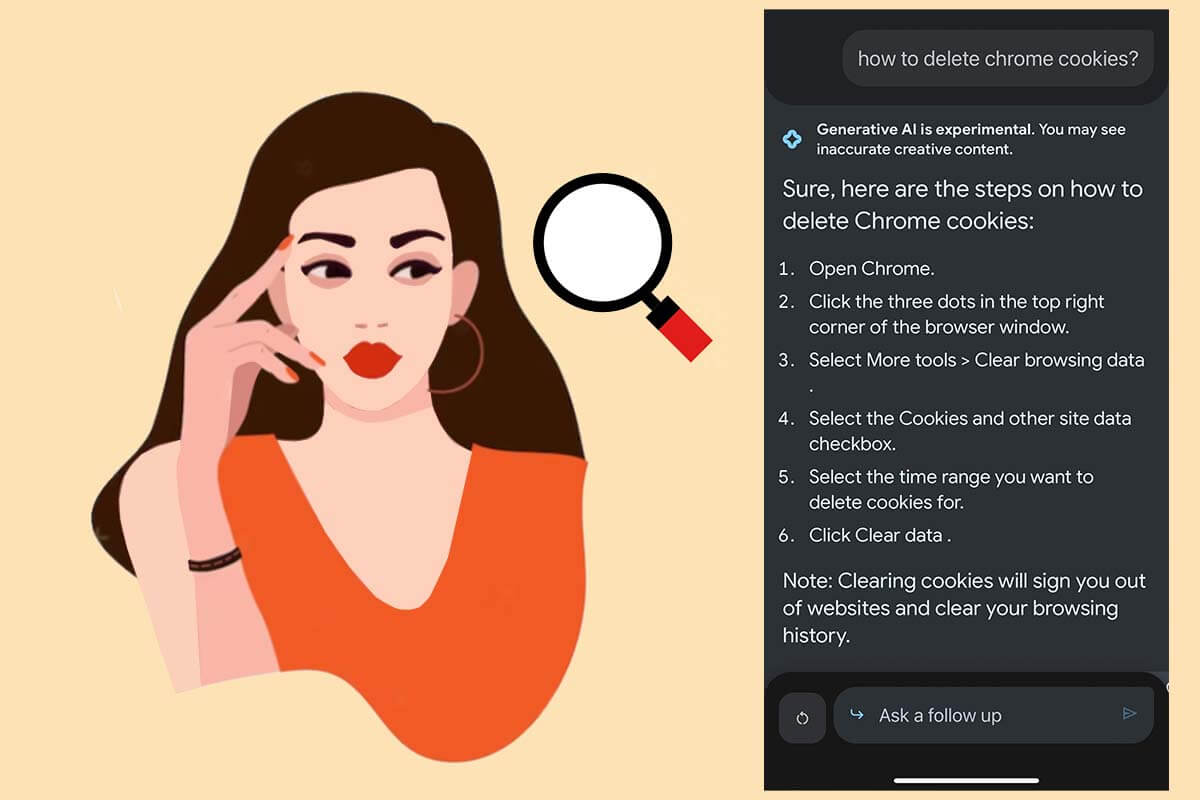
Schema markup audits are necessary SEO tasks to get on a regular schedule. Otherwise, schema markup drift often occurs and diminish your SEO efforts. This audit type helps you identify errors and redundancies that prevent search engines from indexing your content on both mobile and desktop.
Even if you’re your marketing and SEO campaigns seem to be performing well, you’ll still want to audit structured data for new opportunities. Local businesxses should proiritize adding Local Business schema markup to sites.
Additional HowTo Schema Markup Tips
- Use jump-to links in article headings that take the reader to each step. Therefore, if they have a specific question or feel like they need more information on a particular step, they can quickly navigate straight to that specific answer.
- How-To articles have increased SERP visibility if each step contains either an image or video thumbnail. You can include this in your HowTo structured data implementation as well as indicate your feature image. This featured image should ideally represent the overall process. Google states: “A more visual variant may be displayed if your how-to contains an image of the completed how-to and an image per step.”
- Google’s Documentation says that: “Each HowToStep must include the entire contents of the source step.” This is because they want the searcher to have sufficient details to complete the How-To task. You can provide supplemental details and tips further down in your article.
- We recommend adding as many of the Google Documentation’s optional HowTo schema fields as possible. This often requires the skill of an experienced schema coder, as most schema markup tools still miss many optional fields. Google states: “Make sure to add as many required and recommended properties as possible so your how-to can be most effectively represented in Google Search.”
- Google continuously tests ways to improve its SERP Featured snippets and its How-To treatment has gained more attention than other schema types. Make sure that your business is making optimal use of it.
- Have a clear schema strategy for how you want your instructional articles displayed. John Mueller shared a key insight: “Google only shows one how-to in search. If you specify two, how would it even work? If there’s no ‘UI-treatment; available, then you don’t achieve much with the markup, even if Google accepted it as valid”. [1]
- Today’s new ChatGPT and Bard AI tools can brainstorm ideas with directive prompts or with a specific direction, such as for creating “how to” content ideas. Whenever you create “How to” content, be sure to include the steps, even if they seem insignificant to you.
November 2021, Google removed excess structured data fields from HowTo markup guidelines.
“I think that’s one of the trickier questions with regards to all of the structured data in that we have a lot of things that we use to try to understand a page and the content on the page that we don’t necessarily show directly in the search results. But a lot of things help us to better understand the content and the context of a particular page. And those are things within kind of like a general Schema.org markup which you can use to do various things. And that’s kind of I’d say, almost a shame that we don’t highlight that in the rich results test.” – Google’s John Mueller [2]
SUMMARY: HowTo Schema Markup Provides A Competitive Advantage
While search engines consider many factors when determining what SERPs to display, clearly, this markup type helps them understand your instructional content. This means it is easier for them to find and match to revevant queries. It’s another way that you may beat your competition.
Partner with Hill Web Marketing and we’ll ensure you Gain all the Benefits of HowTo Schema Opportunities
[1] https://mastodon.social/@johnmu/110170507628253569
[2] https://blog.milestoneinternet.com/digital-media-marketing/changes-to-howto-qapage-specialannouncement-schema/

One reply on “Implementing How-To Schema Markup”
[…] your how-to content by aligning it with user queries. By implementing HowTo schema, you can gain a competitive edge over businesses that do not use […]